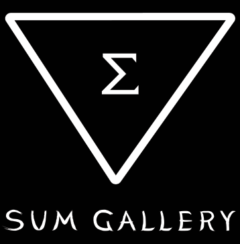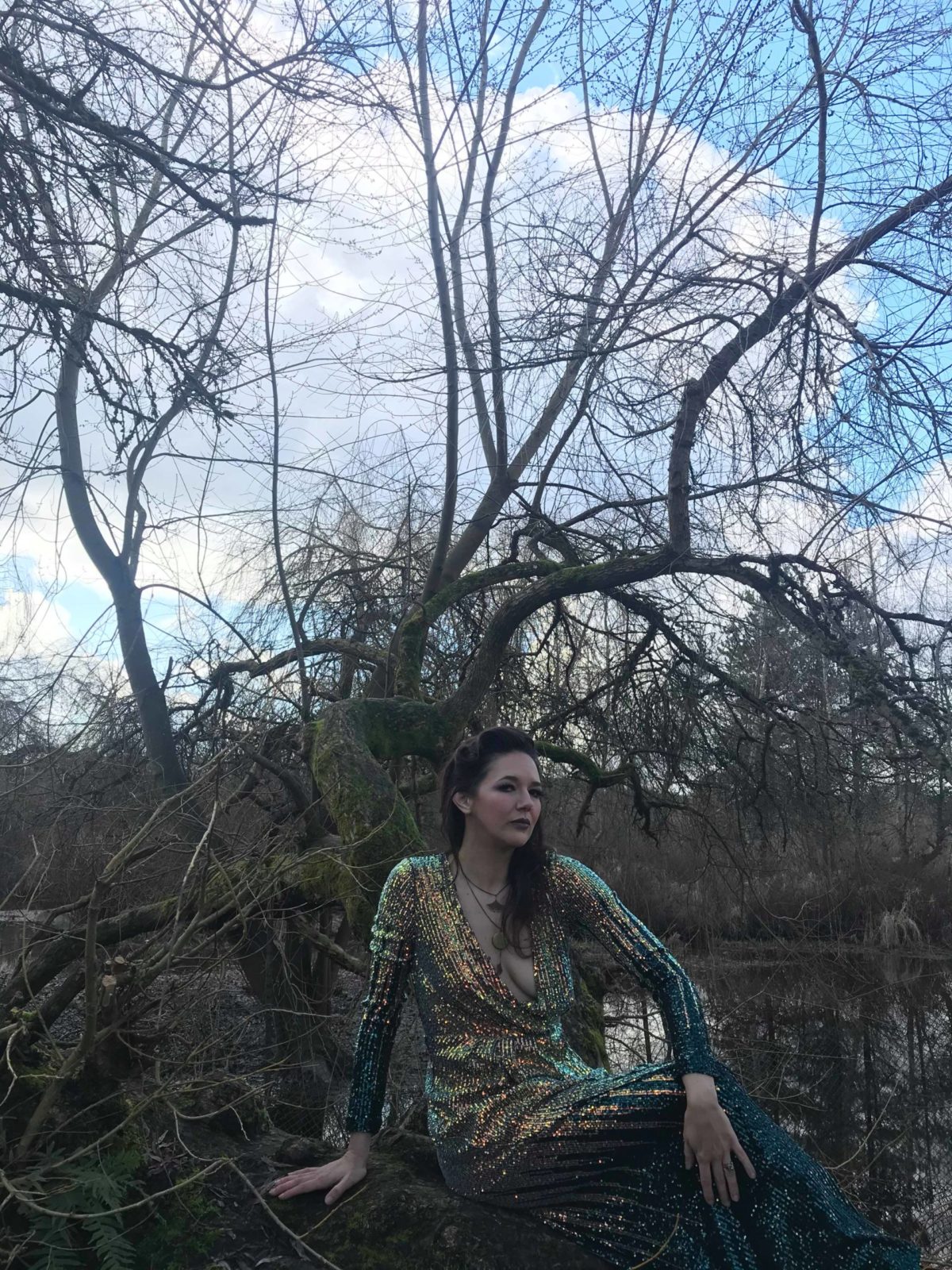Aani! Dolly Berlin ndizhinikaas.
(Hello! My name is Dolly Berlin)
I am a burlesque showgirl and event-producer-on-pandemic-hiatus based in Tkaronto (Toronto).
A proud Indigiqueer/Bi+ mixed Ojibwe woman, I am very excited and honoured to collaborate with Never Apart to bring you this column highlighting Two-Spirit and Indigequeer folks making waves in the arts.
This month I’m chatting with Shane Sable of Vancouver’s Virago Nation. The all-Indigenous burlesque troupe’s mission is to “reclaim Indigenous sexuality from the toxic effects of colonization.” It’s been really wonderful to watch the success of this troupe and to sometimes even get to play on stages together across the country.
I have been on the email list for an art drop-in run by Shane through SUM gallery in association with the Queer Arts Festival for some time now, and finally was able to attend a recent meeting. The energy was warm and inviting, something that is sometimes hard to achieve in this new era of digital interaction. Shane has a ton of perspective on creating and community, so let’s get a little more friendly.
Hey Shane! Introduce Yourself to Us
My name is Shane Sable, I am a Two-Spirit Gitxan artist and activist. I am the convening member of Virago Nation and I currently work as the Two-Spirit programmer for the Queer Arts Festival.
Tell us more about Queer Arts Festival and what you do.
Queer Arts Festival as a whole is a organization which is dedicated to uplifting art created by those along the 2SLGBTQIA+ spectrum. One of the ways that we pursue that goal is offering an annual festival for queer arts, and another other way is through SUM gallery, a dedicated space for queer artists who are more likey to experience barriers to access.
My role is the Two-Spirit Programmer. The organization was originally launched in part by a two-spirit person by the name of Robbie Hong, and in 2017 the organization passed over curation of the festival to Adrian Stimson, a 2S artist. It was really historic to have an organization center 2S art so significantly. That was my first interaction with the organization; I went to view the festival and was also booked to do some spoken word for an exhibition called “Lay of the Land.”
I did not know you did poetry!
I find myself being asked to do it from time to time, and so I do but it is not the primary output for me. I was actually feeling insecure about participating in this poetry event and so I created a spoken word strip!
So that was the beginning of my relationship with the organization, and I began working with them to hold talking circles to support artists at SUM Gallery. I was doing it because that was something I wanted to see, but they were very gracious in providing the space and also offering to help with grant writing to fund the program.
I had just finished working for an organization called Sex Workers United Against Violence, co-ordinating a project called “We Have a Voice; Indigenous Women Speak Out.” That program used art and culture activities to provide a space for women doing street level sex work to speak about their experiences in a de-stigmatized and safer space with the overall intention being to offer healing and transformation in togetherness and creativity. We created quite a body of work over the 2.5 years the project ran and at the end SUM Gallery offered to partner with us to have a formal art show in a gallery space and give the opportunity to have their art be seen and their messages out to the public.
I now work at QAF continuing the talking circles and curating 2S performance. I do post-secondary outreach, speaking in classes about what Two-Spirit is, pronoun uses, and the ethics of presenting stories. One of the pieces I’m working on is a best practices document for arts organizations that present 2S stories. It’s become apparent to me in my time working in the arts that artistic organizations are keen to hold up Indigenous and 2S creators but they don’t necessarily take the time to understand what doing it in a good way entails, or in a way that doesn’t perpetuate trauma on the communities they are seeking to support. They may not realize that a different level of care is required because they don’t have the context to understand.
Are the talking circles similar or different than the art drop-ins you run?
The circles were called Cultivate and ran through 2019 into 2020 and then because I did not feel confident in the ability to hold the kind of space necessary in a digital context, I modified the program. It was an opportunity to provide connection and support without the expectation of a healing moment, which feeds into the best practices project.
Art drop-ins are shared online via Zoom. There is one circle specific to Indigenous folks that identify along the queer spectrum and another circle for “every queer.” The separate 2S one is available to acknowledge that there are limited spaces for 2s people to talk about their experiences and that requires a special space for them.
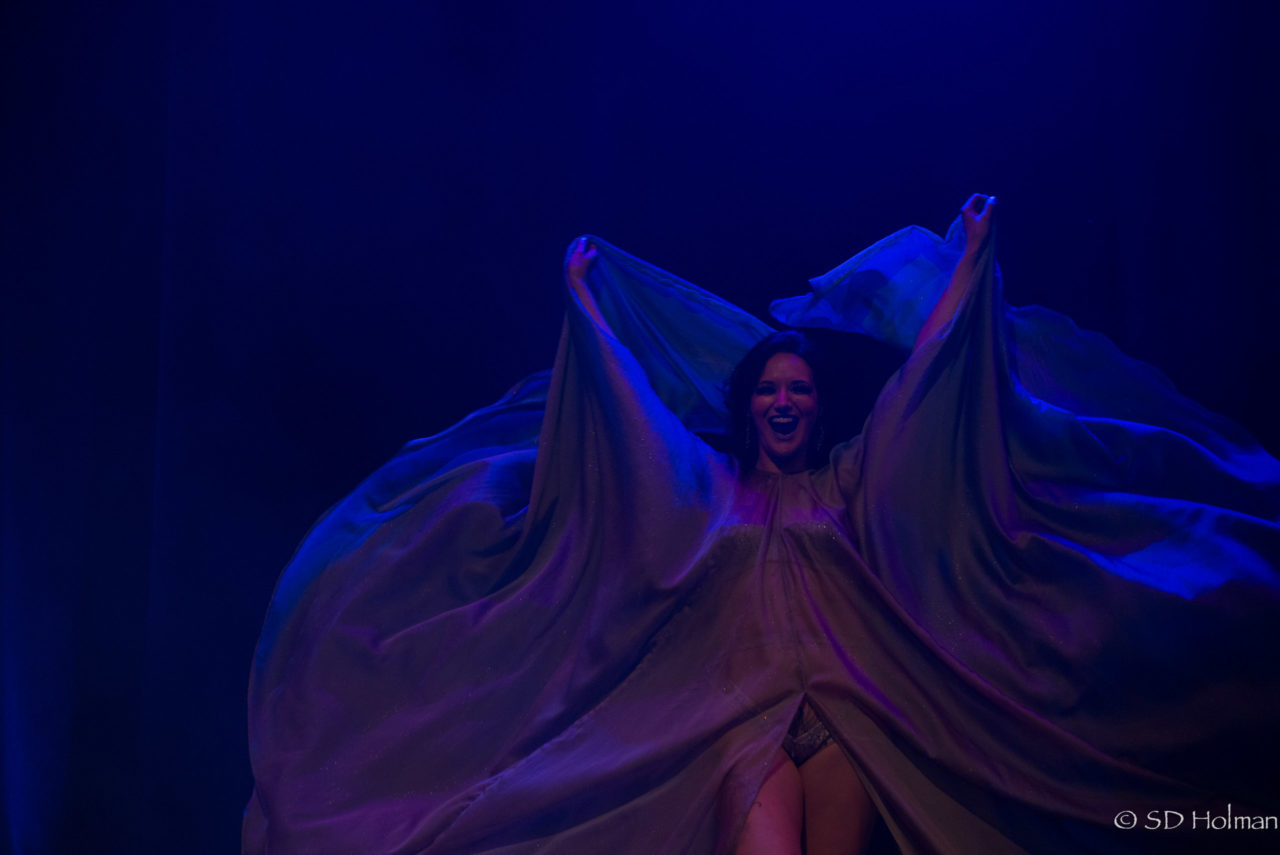
Shane Sable Too Spirited / Photo: SDHolman/Shooting Gallery Arts
What other projects are you working on?
I am working with Allan Lindley who is a wonderful 2S knowledge keeper who does arts-based facilitation with IndigenEYEZ and works for RainCity here (a housing non-profit). We’re going to be working on a drop-in facilitated art workshop, using and referencing traditional language research that different Indigenous kin have done around “waking up” the different language and names that cultures have had for those of us who now call ourselves Two-Spirit. Not just to acknowledge them, but also as a platform to imagine new ways in which we want to define our experiences and identities through words.
I’m so thrilled also for a digital artist residency with Dana Danger and Raven Davis and to see what people are going to create. The digital residency is something that is still in the process of building. We definitely have had barriers getting it up and running in part with things running slower with Covid and also with losing a member of our community at the beginning of the year; Taran Kootenhayoo. Taran’s presence is so deeply felt in Indian Country as a whole, and especially in the artistic community, that we need to delay a little bit because it’s too hard to ask people to do this creative work in a time of grief. So, it’s looking like it will be happening in the summer rather than spring. It’s going to be open to 2s artists from anywhere, and at the end of the residency the output created will have space in a digital show as part of the festival.
We should backtrack and talk about how you got started in performing and the formation of Virago Nation.
I started performing in summer 2011. I had always had a soft spot for things like burlesque because I spent a lot of time with my grandparents growing up watching the golden oldies on tv, seeing that glamour and showmanship were something to look at and admire. One day someone brought me to a burlesque show in Vancouver; I didn’t know that was something you could do. It fit really perfectly for a variety of reasons. I had recently finished grad school and felt wiped away and needed to find ways to rebuild myself and have an appropriate outlet for a particular kind of energy. I always enjoyed being naked, and burlesque is political nudity which I am 100% for. In a previous life I was formed by the punk community, and it offers those DIY and activist layers if you pick away at it. There were also ways in which it was helpful for me to become comfortable with expressing a particular kind of femininity that I felt the world expected of me, and that frankly I always felt my whole life that I never understood. The motivations were multifaceted. It was great, I enjoyed it, and I worked like a motherfucker, but then I got so burned out and went on hiatus. I was working full time, co-producing a monthly, working in another monthly, and had a solo career. I got to a point where I was turning out numbers with such a high frequency that started to feel silly. I started to feel like a silly child running around in my underwear. (An aside, at this point I absolutely cackled because I know that feeling exactly).
I felt if I was going to come back it had to be for more. It wasn’t enough to be a naked feminine vessel in public, for that to be the motivation. It wasn’t filling me up. That was when I decided to reach out to some of the members of what is now Virago Nation.
Partly, I had been struggling to come to terms with my Indigenous identity that I was not open about in a lot of spaces. I didn’t know how to integrate that component into what I had built for the stage, and it was a conflict of values for me. I had grown up in the burlesque world under the precept that your burlesque persona is the best version of yourself, and how do you do that if you are not acknowledging all aspects of yourself?
I happened to know other folks in the burlesque community that were Indigenous and were not bringing that aspect of themselves onto stage or into their personas. I reached out to them and asked if we could meet for lunch to form a community for support.
Manda Stroyer, Sparkle Plenty, Ruth Ordare, Scarlet Delirium and I had brunch together, and at the brunch I asked everyone to go around and re-introduce themselves as our Indigenous selves, not as our burlesque personas. We did a few brunches and some of the stories that came forward were so unique while still sharing a common thread of being Indigenous people living in a colonized world. We all had really different levels of comfort with that aspect of our lives. It is a risk to be ourselves in a public space, and not just because we participate in a sexualized medium.
We eventually came to the conclusion that the stories we were sharing needed to be shared outward and that was how it organically came to be that we performed as a group rather than just being a group for support. And we reached out to Rainbow Glitz to bring her into the fold.
Our first full group debut was at Talking Stick Festival. We booked that, then another festival and a gig at the Museum of Anthropology at UBC. It was beautiful, they had our stage set up at the foot of a bunch of totem poles. We didn’t intentionally shift, but we did lean into the framing of presenting ourselves as a legitimate artistic group rather than a group specifically for entertaining. There’s something about the culture of dedicated art spaces that lifts everyone up, and we’ve been lucky to keep booking on those tracks. We’re working on 5 years now.
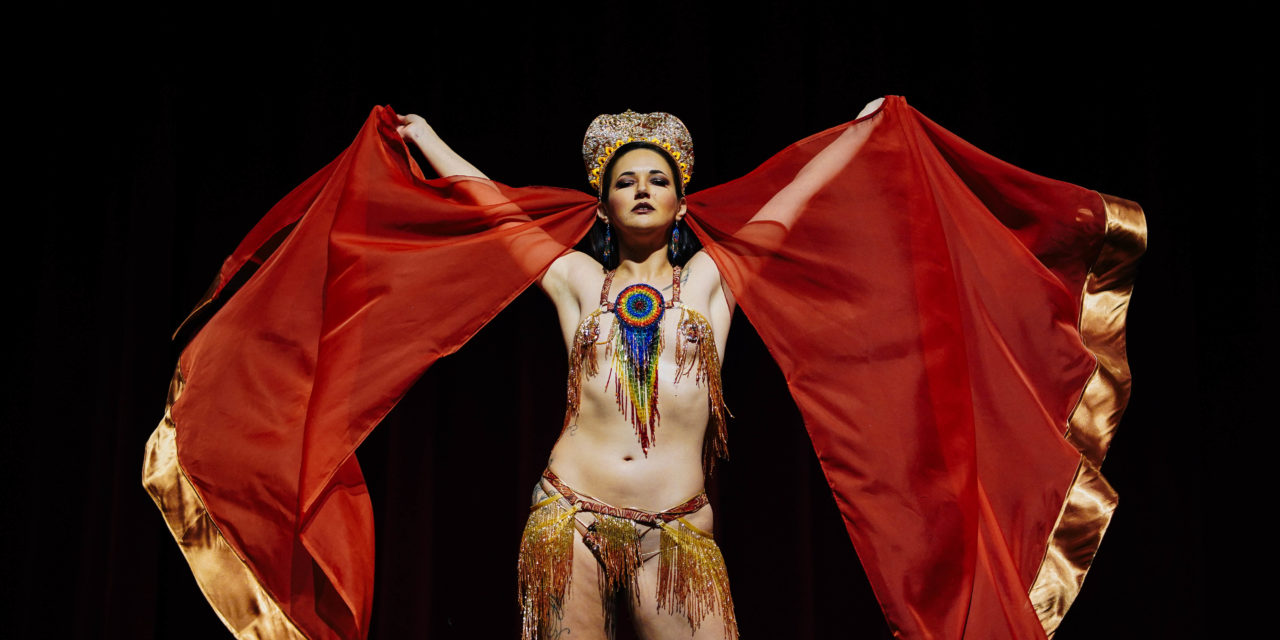
Shane Sable Turn it up and Disrupt UBC / photo: Tandem Photography
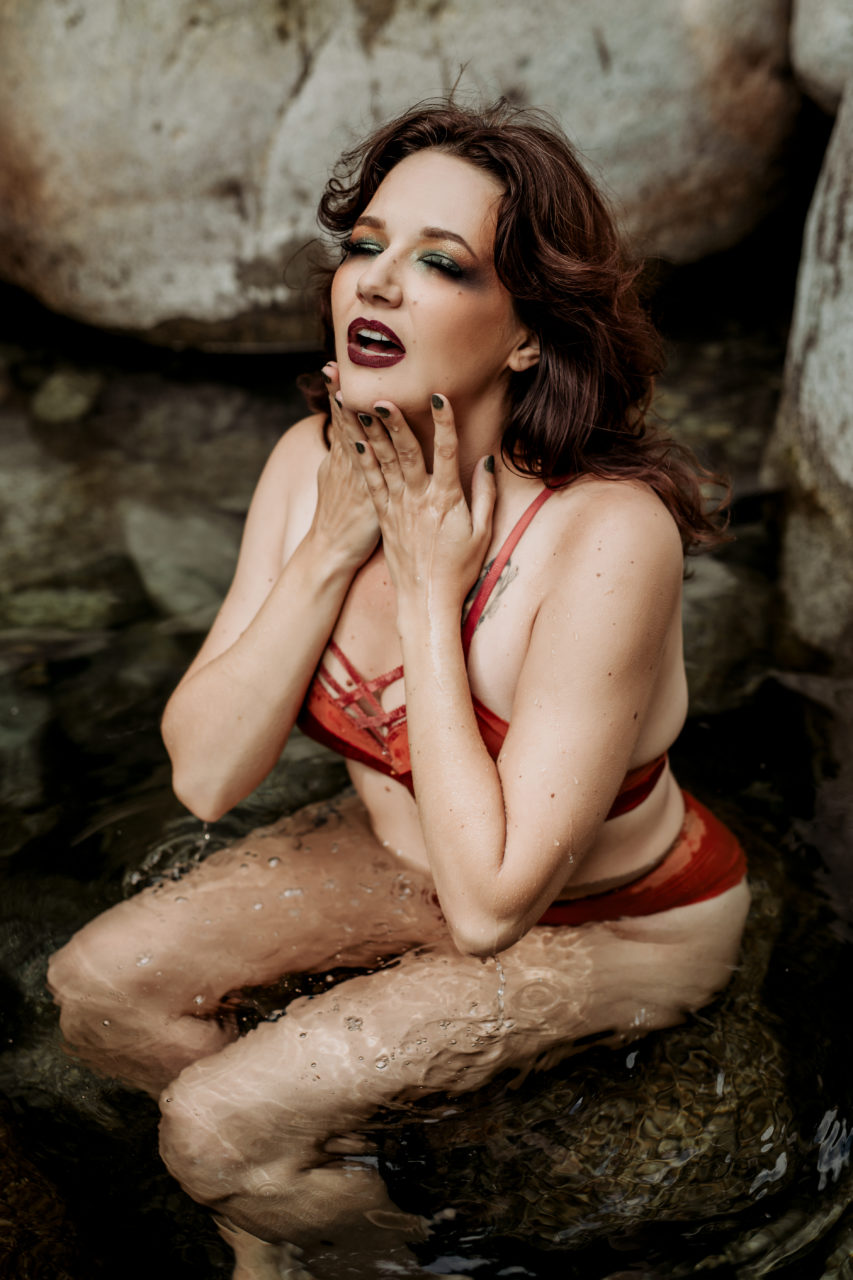
Shane Sable / photo : Misty Moss of Moss Photography
Have you faced any challenges with how people in the art world view burlesque?
It’s really changed over the course of my burlesque career. When I started, I was working in the more traditional burlesque context of nightclubs and community theatres. At that time, in those contexts I really felt that if they weren’t someone who was a fan, it was something someone would look down on. However, with the founding of Virago Nation and the pivot we’ve experienced to primarily performing in festivals and theatre in the formalized arts context, I feel like we get a lot of acknowledgement and respect as artists.
It could be that we’ve been really lucky in terms of the people we have been able to work with. For example, I think Indigenous folks really get it. We expected a lot of resistance to our work as a whole because we knew how much trauma is caught up in the Indigenous relationship to bodies and how much colonization has poisoned it. And instead there has been a real coming together and wave of support. Time after time, we have had it demonstrated to us from our community that this is something they appreciate, from booking us to come out and perform or social media love.
Your troupe has adapted to covid restrictions with livestream shows like this summer’s “Too Spirited” show with Queer Arts Festival. How has adapting to this format affected you? Can you share a bit about the process of building content for a streamed show?
QAF were really nimble with pivoting to a hybrid model this year and wanted a show with Virago Nation, so we offered a digital burlesque show. It was our first digital show, and we pre-recorded everything at The Cultch. It was really interesting to be on both sides; to be part of the production team making decisions about which platform to use, delivery method, and interactive components, as well as the performer aspect of working through Covid, capturing the spirit of an in person show in digital format, and the idea that to convey the intimacy experienced in a live show you need to change and project your energy differently.
Plus the videography and editing, for example… remembering to say to the people filming and editing that in a burlesque performance, if I do a split towards the camera…I want people to see my box, so please don’t cut to a shot of my face. Also realizing how beneficial it might be, if you can, to have 3-5 people in the room to clap or cheer. It makes a difference and you don’t wrap your head around it until you see the final product.
We are just so grateful to them for giving us that experience with a highly accessible show. Our kin who are not normally able to see us regardless of COVID were able to see it, our reach was so extensive. I think overall there were 2500 unique views on the initial screening. Never in my wildest dreams did I think I would do a burlesque show that would be seen by that many people.
We learned a lot in the process of making Too Spirited, and once we went through it we felt inspired. There are many access considerations for us as a group, be it working in front line community work or healthcare, and others who have immune barriers or other physical things to manage. We really found that digital performance is a saving grace, given the contexts of the different needs of our members. We decided we do not want to pursue doing in person shows and needed to pivot the remaining body of work we had planned.
We have an agreement with Kwantlen Polytechnic University to deliver a variety of burlesque and workshops through our funding with the Social Sciences and Humanities Research Council.
We renegotiated the terms of our grant to take the remaining funds and invest in developing a digital studio. So we are working right now to create a suite of digital offerings including a show and series of short education videos and workshops. This new show has grown dramatically in scope. We’re now calling it something more akin to a docu-strip with a goal of creating a theatrical narrative of who Virago Nation is as a group as well as individuals, and what we come together to work for. We are working with a queer media team for filming, editing, and capturing a digital narrative. We’re creating something new and different from what we ever conceived before covid.
Will this be specific to the program or available to the public?
There will be an initial release to KPU, after the content will revert to us similar to the show with QAF.
As a group Virago seems to be in some areas heavily inspired by movements and politics, but you also bring humour, modern sensual pieces and traditional glamour numbers. When it comes to inspiration, what motivates you to create a more political piece versus a more classic number, either individually or as a group?
At times people aren’t sure what the connection is between burlesque and what we are trying to do with the more conceptual cultural work of changing our shared understanding of sexuality and embodiment of Indigeneity. I think that the plurality of our expression is where that lies. Being able to point to someone (any of us) on the stage and say “that is Indigenous sexualtiy” or “that is a healthy relationship with your body,” can look like all of these things.
We do not want to be a “noble savage” or “squ*w,” we want options, and so by allowing the multiplicity of representation to share space, it offers others that freedom of what it might look like for themselves. The goal is role model sexual agency and embodied agency. We are choosing to be there. We are choosing our aesthetic and our expression. There are no artistic standards in the group that define what an act has to look like. We don’t strive for uniformity in aesthetics. The purpose is to reach as many people that struggle with that relationship as possible and provide an aspect of representation that makes them feel seen.
And you have new members now, yes?!
We’ve been lucky, it’s been a busy few years and now that we’ve incorporated as a non-profit we’ve been able to grow. We’ve always wanted to bring more people in and eventually support artists from even more mediums. So in our initial expansion we have welcomed Monday Blues and Lynx Chase to the group. Both of whom have worked with us in the past and featured with us on shows. They are each such gifted artists and beautiful, sensitive, smart, critically thinking people that it was a thrill to be able to invite them to join us.
Speaking of other mediums, what artists have piqued your interest lately?
When it comes to music I’ve really loved Anachnid. Their music and mood really tweaks some energy I have been feeling around Indigenous-gothic, and horror stories and our spirit-being stories and how those things come to be. Anachnid has that vibe!
I love that! Last month Quanah Styles who I spoke with mentioned the movie Monkey Beach, I think it touches on supernatural elements in the west coast?
It’s based on a novel by Eden Robinson, who is from my neighbourhood, but not my nation. I was introduced to her at a reading once and I fangirled so hard it was embarrassing. I was born in Smithers in northern BC., and some of her writing takes place in Terrace, an hour and a half away. I miss living in the north badly. I had to come back later and thank her for her writing feeling like home to me. And when I thanked her for that she gave me a hug and took the earrings she was wearing out and gifted them to me. The best thing about Virago Nation is how it has helped me to connect with other Indigenous people and helped me find a way back to my own culture.
I didn’t mention when we were talking about inspiration, much of it is getting inspired by one another and our individual journeys of reclamation. For example, one of the first words I learned in Gitxsanimaax was “bilaa” which means abalone. I felt inspired by that to create an act about what the spirit of bilaa would be like, and called it mother of bilaa (like mother of pearl). We get inspiration from the outside and also from one another and across different mediums. There are so many exceptionally talented 2s artists here. Sierra Tasi Baker is an amazing dancer and choreographer who also does architecture design and fashion, or Paisley Nahanee who does leadership development and is also a DJ.
How are you connecting to your culture during COVID? Any tips for anyone feeling disconnected out there?
I remember so distinctly when it became clear last year that this was going to have a bigger impact on us than we initially thought, I became bereft, and very depressed because I had wanted to make land based education a priority for the year. I had just learned in the year prior how to make salves and about traditional plant harvesting and medicine use and then was stuck in the three block radius of my house. I was shocked as the year unfolded that I got more access to land based skills-learning than I ever have in my life including when I lived on the land. I learned about tanning bear hide, how to preserve bird wings, how to tan fish leather. The amount of opportunities that the Native community created overnight was amazing and everything I needed to survive. It’s been overwhelming how much opportunity has sprung out of people’s need for connection and to continue those activities. So I encourage folks to listen broadly!
As for the spiritual components, a lot of my spiritual practice is private anyway. But I recently joined a digital circle that was started by the grannies in the DTES here who are a bunch of women who I used to work with. It really has made a huge difference. I have facilitated a lot of circles and it’s easy to forget that it’s important to be only a participant in those spaces at times. I’m also taking a community-led language class. So finding the kind of gathering you need is important. Medicine is in lots of things. Togetherness is medicine.
You can connect with Shane Sable:
Instagram: @shanesable
Facebook: https://www.facebook.com/ShaneSableCreations
Virago Nation
Instagram: @viragonation
Facebook: https://www.facebook.com/ViragoNation
